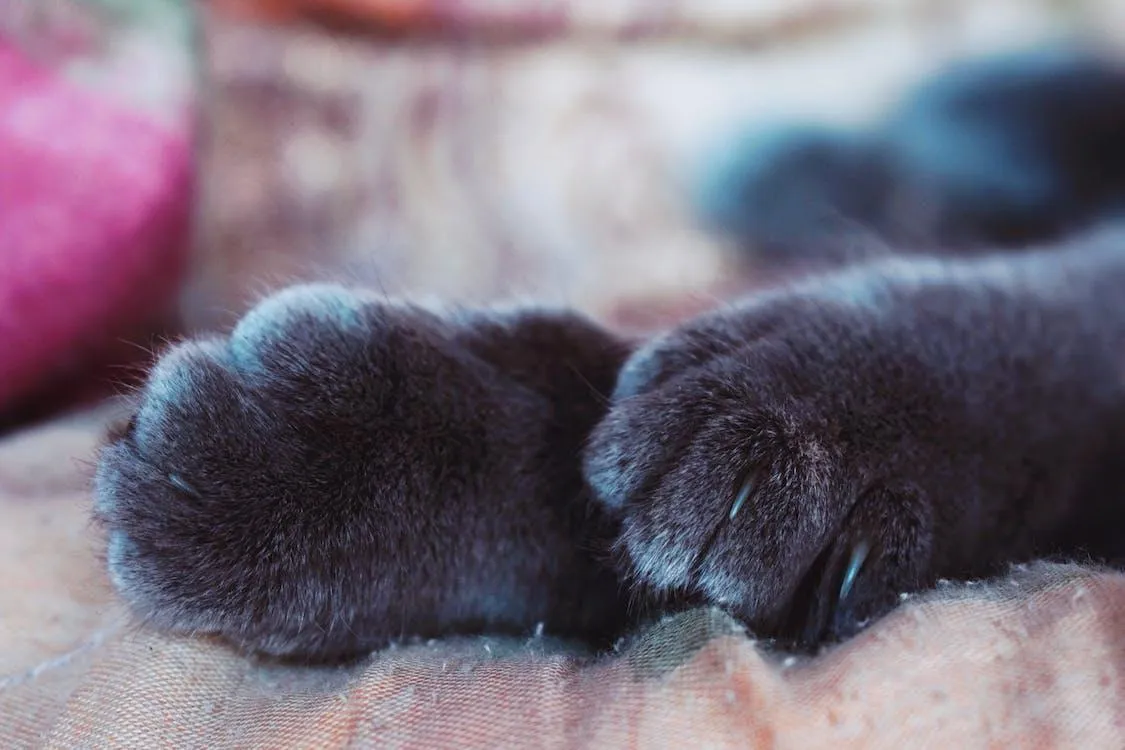

Paws and Nails
Cats' paws and nails are essential parts of their
anatomy, and they serve various functions.
Here's a comprehensive overview of cat paws
and nails and the importance of their care:
Cat Paws:
Structure: A cat's paw is a complex structure composed of multiple components. It includes five digits (four toes and one dewclaw) on their front paws and four toes on their back paws. The paw pads, which are the soft cushions on the underside of the paws, provide insulation, shock absorption, and traction. Cats have retractable claws, meaning they can extend and retract them as needed.
Sensory Organs: Cat paws are equipped with a high concentration of nerve endings, making them extremely sensitive to touch and vibration. These sensory organs help cats navigate their environment, detect changes in textures, and locate prey.
Grooming: Cats use their paws for grooming. They lick their front paws and then use them to clean their faces and ears. The rough texture of a cat's tongue helps remove dirt and loose fur.
Temperature Regulation: Cats can sweat through their paw pads, which helps with temperature regulation in hot weather.
Cat Nails:
Structure: Each of a cat's toes has a retractable claw encased in a protective sheath. The core of the claw is sharp and curved, designed for hunting and climbing. The sheath helps keep the claw sharp and prevents it from wearing down.
Functions: Cat nails serve several important functions, including:
Hunting: Cats use their sharp claws to capture and hold onto prey.
Climbing: Claws enable cats to climb trees, fences, and other vertical surfaces.
Defense: Cats can use their claws for self-defense when they feel threatened.
Marking Territory: Scratching objects helps cats mark their territory by leaving both a visual mark and a scent mark from glands in their paws.
Importance of Cat Paw and Nail Care:
Regular Grooming: Cats groom themselves naturally, but they may need assistance, especially long-haired breeds. Regular brushing can help prevent matting and reduce the risk of ingesting hairballs.
Trimming Nails: Keeping your cat's nails trimmed is essential for their health and your household's well-being. Overgrown nails can lead to discomfort and can cause problems with walking or scratching. Trimming also reduces the risk of accidental scratches to humans and other pets.
Scratching Posts: Providing your cat with appropriate scratching posts or pads allows them to fulfill their natural scratching instinct and helps keep their claws healthy. It also protects your furniture from damage.
Health Monitoring: Regularly inspecting your cat's paws and nails can help you detect any signs of injury, infection, or abnormal growth early. If you notice any issues, consult your veterinarian for appropriate care.
((Declawing Considerations: Declawing (amputation of the last bone of each toe) is a controversial procedure and is banned (& strongly discouraged) in many places including here in the UK because it causes significant pain and can cause behavioural problems. It's crucial to explore alternatives and consult with a veterinarian before even considering declawing. In my opinion, there is NEVER a justification for declawing a cat's nails! ))
Cat paws and nails are vital for a cat's well-being, allowing them to perform various functions in their daily lives. Proper care, including grooming, nail trimming, and providing suitable scratching outlets, is essential to ensure your cat's comfort and health while minimising any potential issues related to their paws and nails.
*Please Note: “As an Amazon Associate, I may earn from any qualifying purchases made through my link. This in no way affects the cost to you”